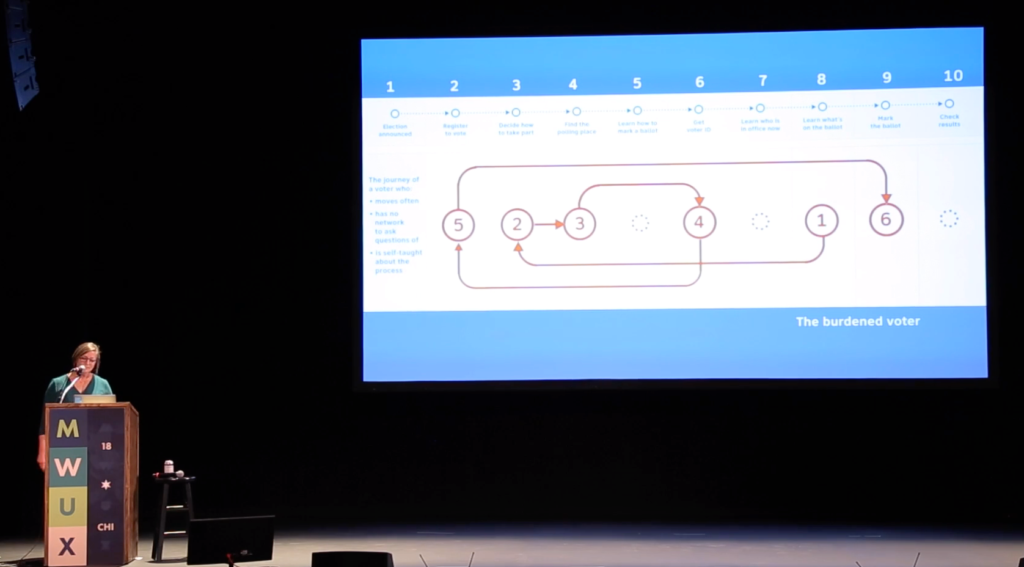Early in 2020, I got to work with a couple of amazing people on exploring what it would mean for policy makers to use the methods and techniques of human-centered design. Alberto Alvarez and Vivian Graubard led the way. Thanks to New America and the Beeck Center for support and publishing.
What can go wrong when we get things right?
I think a lot about how design affects the world. And for a long time, I’ve been thinking about and studying how focusing on one user doesn’t always produce the outcomes we want. Humans are social creatures. We have relationships. Those relationships don’t fade or disappear when we’re interacting with a designed thing. They’re still present as influences.
This goes for users, but it also goes for designers. There’s no lone designer making all the decisions. Even if you’re a team of one, you’re interacting with any number of other people who at least influence the decisions you’re making. Those folks are often making design decisions, themselves.
All of those decisions interact. They originate in personal experiences, training, data, stories.
So, yes, understand your user’s needs. Deeply. Design for them. But look beyond that single user, and the best possible outcome. What happens for other people or organizations? Is it all good? Probably not. What are the ripple effects of getting things right for our core user?
Let’s look at some cases that I put together in a talk for the IA Conference in spring of 2020. Let me know what you think. (I’ll add captions and a transcript soon.)
For more on how data can be weaponized for domestic violence, read this post from Eva PenzyMoog, a UXer who studies this problem extensively.
Can we design a better ballot?
Every presidential election cycle, people get interested in why ballots are the way they are, so every few years, I give a talk about that. I’ve updated my talk about ballot design for 2020.
The epic journey of American voters
Every 4 years, I get a lot of requests to talk about design in elections from the UX and civic tech communities. Watch the talk at Midwest UX in 2018.

I’ve also written quite a bit about the hurdles that U.S. voters encounter, based on research I did before and while I was at the Center for Civic Design. There’s also a poster that you can download.
Rethinking user research for the social web
While the Web has evolved from flat documents to being fluidly ambient, we’re using user research methods from 1994. In this session, Dana presents 5 major issues confronting UXers working in the social web, challenges you to creative solutions, and shares experiences from pioneering researchers.
Watch the video of this talk from ConveyUX in 2013 in Seattle.
Or, check out the slides, below.
Gaining design insights from your research recruiting process
I gave a virtual seminar for UIE in October 2013 about how to look at recruiting participants for studies as bonus user research.
You can get the archived seminar from UIE.
Or, have a look at the slides.
Heuristics for understanding older adults as web users
In 2004, Ginny Redish and I, along with Amy Lee, conducted a review of the relevant literature — research by other people — about designing for older adults (people over age 50). Doing this changed my thinking about universal design.
It wasn’t enough to generate design heuristics. We also came up with ways to operationalize them. That is, you can actually test to see if you have implemented these design practices by answering several questions about each heuristic.
Here’s an article from Technical Communication (which, by the way, was the runner-up for best article of the year for that publication) in which we describe the project, list the heuristics, and talk about some of our results in using them.
Designing for older adults: Reviewing 50 websites
AARP, an American organization for people over age 50, commissioned Ginny Redish and me to give them a scorecard of how well the Web was supporting older people in terms of design. We weren’t to evaluated sites only directed at older adults, but do conduct a broad review of sites that regular people might encounter on any given day, regardless of age.
Ginny and I came up with an unusual method to do this review: persona-based, task-driven heuristic evaluation. Very simply, we tried to take on the personalities of one of two personas, Matthew and Edith, as we did tasks they would do on sites they would normally visit. And then we rated those interactions against a set of heuristics for good design for older people.
See the results. Though this report was published several years ago (2005), the findings are pretty solid.
Testing in the wild: Conversation with Tim Keirnan
It’s always stimulating talking with Tim Keirnan, who is the host of the podcast Design Critique. We had a great conversation about how to do evaluation of designs in the field rather than in the lab — and how easy and quick it can be. (Recorded in November, 2008)
The difference between good UX teams and great ones, with Jared Spool
I had a blast in this conversation with Jared Spool (recorded June 7, 2008) about what qualities make user experience design teams great and why some teams just can’t get past good.
